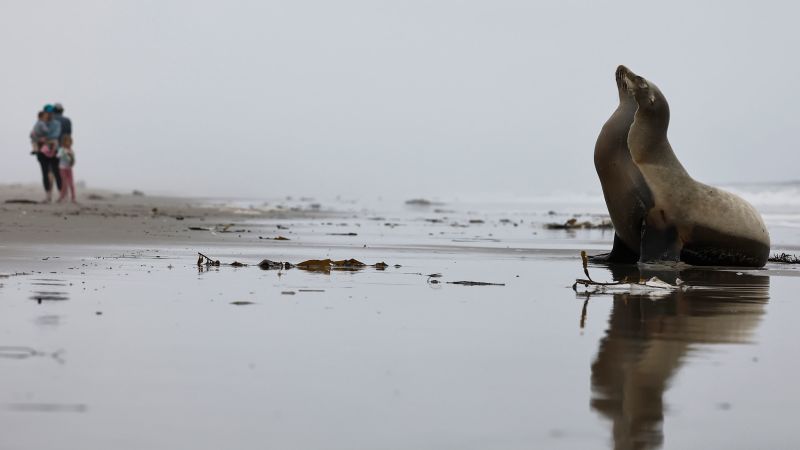California Sea Lion Attacks: Reasons and Safety Precautions
California sea lions, while undeniably charismatic, are wild animals capable of inflicting serious injury. Recent reports of increased interactions, and even attacks, highlight the importance of understanding their behavior and taking necessary precautions. This article delves into the reasons behind these incidents and provides crucial safety guidelines for anyone visiting their habitat.
Why Are California Sea Lion Attacks Increasing?
Several factors contribute to the rise in sea lion attacks, none of which excuse aggressive behavior but offer context:
- Food Scarcity: Fluctuations in fish populations, a sea lion's primary food source, can lead to increased aggression as they compete for dwindling resources. Hungry animals are more likely to be bolder and less tolerant of human presence.
- Human Encroachment: Increased human activity in sea lion habitats, whether intentional or unintentional, disrupts their natural routines and breeding grounds. Approaching too closely, feeding them, or disturbing their pups can trigger defensive reactions.
- Territoriality: Sea lions are fiercely territorial, particularly during breeding season. Males, especially, can be highly protective of their space and offspring, leading to aggressive displays or attacks towards perceived threats.
- Molt Season Stress: During their annual molt, sea lions are vulnerable and less energetic, potentially impacting their temperament and increasing irritability.
- Injured or Sick Animals: A sea lion suffering from injury or illness may exhibit unpredictable behavior, including aggression, as a result of pain or disorientation.
Recognizing Signs of Aggression in California Sea Lions
Understanding the warning signs of an aggressive sea lion is crucial for preventing attacks. Be aware of the following:
- Loud vocalizations: Barking, growling, or other aggressive sounds are clear indicators of distress or territorial defense.
- Direct eye contact: Sustained, intense eye contact is often a sign of aggression in many animals, including sea lions.
- Raising of the head and body: This posture is a display of dominance and a potential precursor to an attack.
- Tail lashing: Vigorous tail movement signals agitation and potential for a strike.
- Wide-open mouth: An open mouth is a clear warning that the animal is preparing to bite.
Staying Safe Around California Sea Lions: Essential Guidelines
Following these safety guidelines is paramount to ensure your safety and the well-being of the sea lions:
- Maintain a safe distance: Observe sea lions from a distance – at least 50-100 yards is recommended. Use binoculars or a telephoto lens for better viewing.
- Never approach or feed them: Feeding sea lions habituates them to humans and encourages aggressive behavior, endangering both them and people.
- Respect their space: Avoid disturbing sea lions, especially mothers with pups. Keep your distance and allow them to behave naturally.
- Keep pets on a leash: Dogs and other pets can inadvertently provoke sea lions, leading to an attack.
- Never turn your back: Always maintain visual contact with the sea lions. Turning your back can be interpreted as a sign of weakness or submission.
- Report any attacks or injured animals: Contact your local authorities or wildlife rescue organizations immediately.
What to Do if Attacked by a California Sea Lion
If attacked, protect your head and neck, use anything available as a shield, and try to escape to a safe location. Seek immediate medical attention, as sea lion bites can cause severe injuries and infections. Report the incident to the relevant authorities.
Conclusion:
California sea lions are magnificent creatures deserving of our respect and admiration. By understanding their behavior and following the safety guidelines outlined above, we can ensure both our own safety and the preservation of these impressive animals and their environment. Remember, responsible viewing and respect for their natural habitat are key to avoiding negative interactions. Learn more about sea lion conservation efforts through reputable organizations like [link to a reputable organization].

